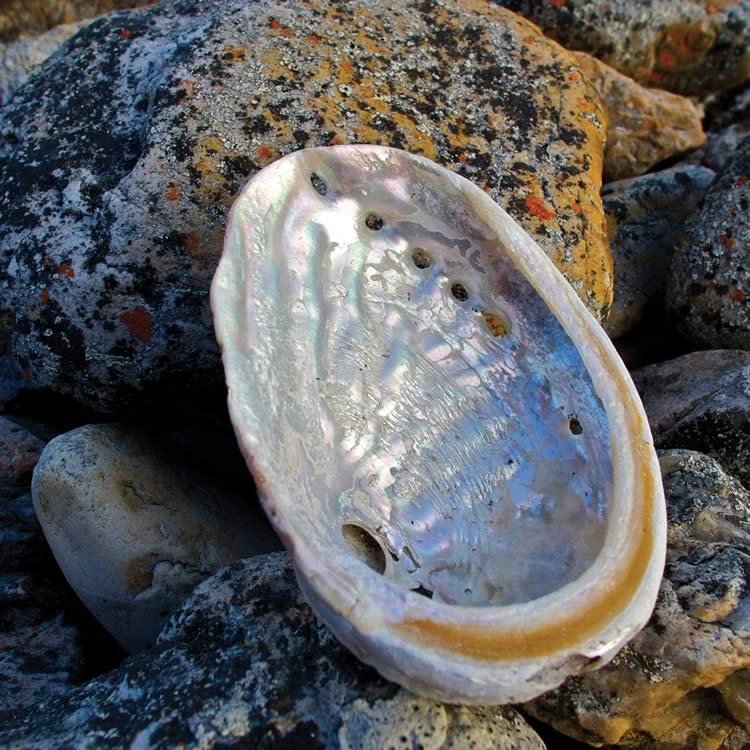Black lipped abalone

Community type
Habitat type
Rocky reefs, kelp beds and inter-tidal zone
This native, large shelled mollusc lives on exposed reefs, attaching itself to hard surfaces with a large muscular foot. Abalone have a head, a pair of eyes, tentacles, and a mouth but they are hard to see as they attach firmly to rocks and boulders of the reef.
Using its file-like tongue, abalone scrape up algae and seaweed. The abalone relies on its impressively strong shell for protection from predators and storms. The shell also contains a series of holes, allowing water to move through so the abalone can breathe and expel its waste. Abalone has been food for Tasmanian Aboriginals for many thousands of years, as they have been found in shell middens along much of Tasmania’s shoreline. They are still an important food today, and Tasmania produces around 25% of the world’s abalone. It is not recommended that they are harvested from the Derwent Estuary due to historical heavy metal contamination. For more information, please see seafood safety.
